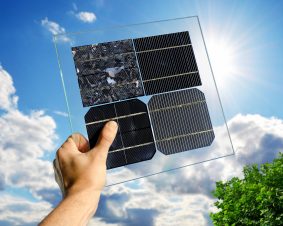 >
Spotlight December 2020: Rethinking Nanosafety – Part II
>
Spotlight December 2020: Rethinking Nanosafety – Part II
In December we would like to draw attention to the special issue: Rethinking Nanosafety – Part II in small.
In the July Spotlight we already presented Part I. This special issue “Rethinking Nanosafety – Part II” also features research papers by renowned scientists in the field of nanosafety research.
The first part of this special issue has been published in May 2020, the second part now in September 2020.
This special issue contains topics such as biotransformation of nanomaterials, nanomaterials as food additives or on the definition of nanomaterials.
Original Publication:

Weitere Spotlights
Spotlight November 2020: Nanotechnology in the public perception
In November, we would like to draw your attention to a publication that examines public perception of the safety of nanomaterials in Austria.It shows, that although there is generally a rather positive attitude towards nanomaterials, there are different opinions on safety issues from different social groups. Further clarification seems necessary. Despite the widespread use of […]
Read moreSpotlight April 2022: A new risk assessment of nanomaterials in 3D printing is needed
The use of nanomaterials in 3D printing has great potential. Due to the properties of nanoscale materials, many requirements can be implemented in 3D printing. However, these unique properties based on the size of the particles also lead to the need for new risk assessments. This is because if the nanoparticles are released in the […]
Read moreSpotlight July 2021: The Path to Digital Material Research – It is never too late to start
Machine Learning, Artificial Intelligence, Big Data…. Have you read these words lately? No, these are not just buzzwords. The digitalisation of science is an evolving topic that is gaining importance with each passing day. That is why this month we would like to introduce you to the article “Digital Transformation in Materials Science: A Paradigm […]
Read moreSpotlight March 2023: How can photovoltaics be made safe and sustainable?
Conventional photovoltaic systems often have only low efficiency, i.e. only a fraction of the solar energy is converted into electrical energy and made usable. For this reason, research is being conducted into innovative materials that can significantly increase the energy yield and thus also enable more electrical energy to be generated from renewable sources. However, […]
Read more


